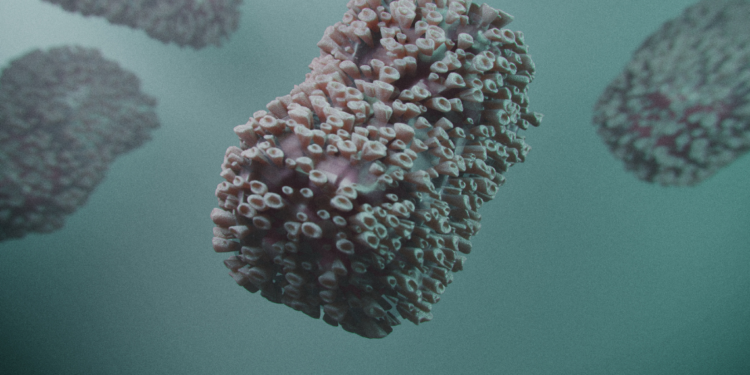Introduction
Monkeypox is a disease caused by the Monkeypox virus. The Monkeypox virus is a member of the Orthopoxvirus genus in the poxviridae family. The Monkeypox virus is closely related to the variola virus, the cause of smallpox. How do the monkeypox pictures look like? Both viruses are distinguished from each other by their host range..The variola virus only infects humans, while the Monkeypox virus can infect both humans and animals.
Monkeypox was first identified in humans in the 1970s in the Democratic Republic of the Congo. The Monkeypox virus is endemic in many parts of Africa. Human Monkeypox is typically a self-limited disease with a mortality rate of less than 1%. However, the Monkeypox virus has the potential to cause a large outbreak with a high mortality rate if it was to spread to a population with no immunity to the virus.
What is monkeypox
The first humans inflicted with the monkeypox virus were present in the Democratic Republic of Congo by police officers in the eastern Congolese province of North Kivu on December 28 and 29, 2018. Monkeypox is a disease that is found to be relatively similar to varicella (chickenpox). It is a viral disease that affects the pox-transmitting simian species, namely the Central African monkey.
The rumors of the virus being “deadly” and posing danger to humankind are not true. In 2001, Variola major was declared eradicated, and this is not the same as monkeypox. However, infection from monkeypox can cause complications such as severe skin ulcers, but these are rare cases.
There are no vaccination fpr monkeypox as it can be prevented by way of containing monkeys and discouraging contact with them. People who don’t want to avoid any contacts with monkeys should treat all clothes, food and drink before consumption. Monkeypox is a disease caused by the Monkeypox virus.
According to Wikipedia, “This disease is currently found in sparse populations of African villagers in Africa. It was first confirmed in humans and monkeys outside the continent in 2003 in laboratories located in the USA. One case has been confirmed as present day Nigeria (2007) and researchers believe this may be due to increased contact with monkey meat”
The history of monkeypox
Monkeypox is also called smallpox virus and probably evolved in a Central African rainforest monkey species. It is believed that smallpox viruses jumped to humans by contaminated clothing and transmitted directly from one infected human to another.
Monkeypox has a lot in common with other pox-related diseases. The main variation between those and monkeypox is that the pox balls, or tsutsugamushi, deposits bacteria in the human bloodstream. Unfortunately this means monkeypox responds better and more quickly to treatment than scabies which protects it from topical treatments like cream for scabies or simple shampoo for ringworm.
The symptoms of monkeypox
The very first symptoms of monkeypox in humans are a skin rash. Those who are infected will be covered in the rash, which takes about 7 days to form. This rash then typically spreads out from the neck and chest area and will form an itchy raised bumpy red skin rash that grows into scabs as it heals.
Another symptom is a fever, which can be very high in some people or just slightly higher than normal with others. Other symptoms include tiredness, headache and muscle aches, sore throat, swollen glands around the groin and armpit area, nausea or vomiting and diarrhea.
Long term symptoms can include openness wounds with the potential to cause damage to nearby tissue. There is also potential long term mental health problems including anxiety, depression and irritability.
Monkeypox lesions can sometimes cause infections to other areas of the body as it progresses or with botched home remedies such as bathing or showering before they have scabbed over. In recent time, there have been a series of researches being published which have found that monkeypox can infect both humans and animals. In these articles, the authors have included images of monkeypox in different forms for the knowledge of readers.
To understand what monkeypox is and what it looks like, here are some articles with pictures:
The impact of monkeypox
Monkeypox is a severely infectious and debilitating disease caused by an animal version of the cowpox virus that occurs in rodents, monkeys, and humanics.
In humans, this virus causes fever, headache, aching muscles, back pain, loss of appetite and fatigue. Skin eruptions first appear about 6-10 days after onset of illness.
Symptoms can range from mild to severe and include pox (pustules), abnormal sensitivity to light (photophobia), swollen glands at the site infection (lymphadenopathy) or other locations (e.g., cervical region), fever, difficulty breathing and swallowing.
Can monkeypox be prevented?
Better healthcare. Better understanding of the virus, better methods of containment (reducing animal-to-human transmissions), and prevention through vaccines.
The best way to prevent the spread of this disease is for everyone to implement stronger control over animal exhibits. Currently no vaccine exists for poor monkeypox, meaning that it can’t be prevented with any medical means. There have been reports in the past suggesting that there may soon be a vaccine made available for human use which could drastically reduce cases in humans and animals alike.
In 2002, one of the first cases of monkeypox attack was discovered in the Democratic Republic of Congo. Anyone who had insufficient immunisation can get infected. In reality, did you know that the risk of getting this is quite low?
Preventing it from spreading from human to human is very likely if people follow these precautions: to thoroughly wash their body with water and soap; to scrub under fingernails; discard needles and other contaminated items; avoid contact with saliva or fluids such as blood, water and organ tissue; do not eat raw food that was near monkeys or animals such as rodents, because they may have picked up viruses from them; avoid drinking untreated village or well water.
To wrap things up
In conclusion, monkeypox is a serious viral disease that can be deadly in some cases. The images in this article are some of the most incredible and disturbing pictures of the disease. To see more monkeypox pictures. These monkeypox pictures are incredible! I can’t believe how clear they are. The detail is amazing. I’m definitely going to share these with my friends.






